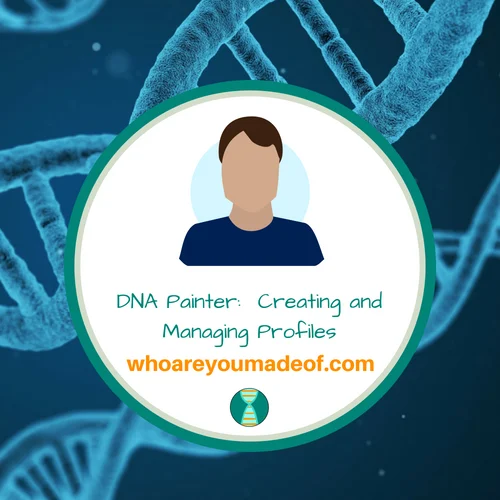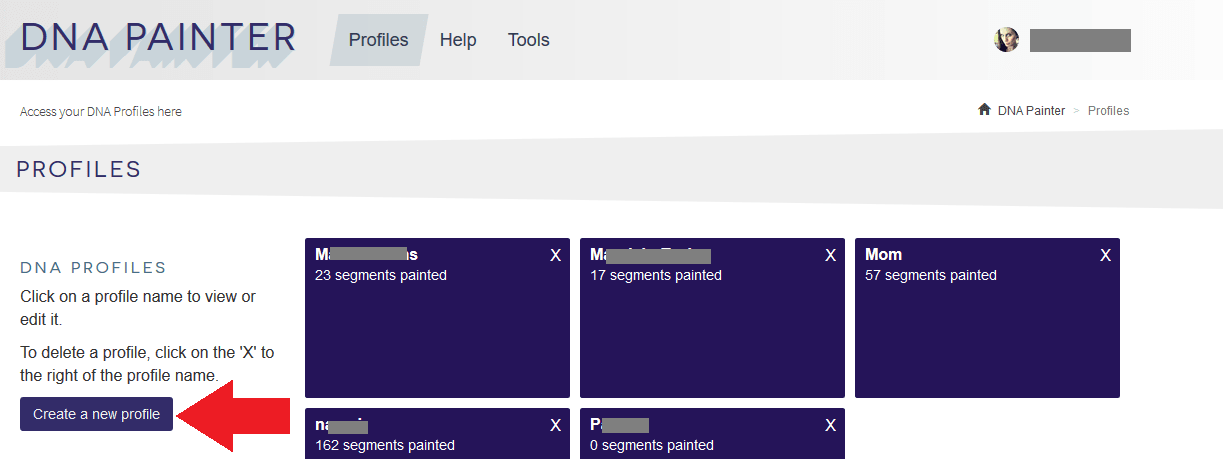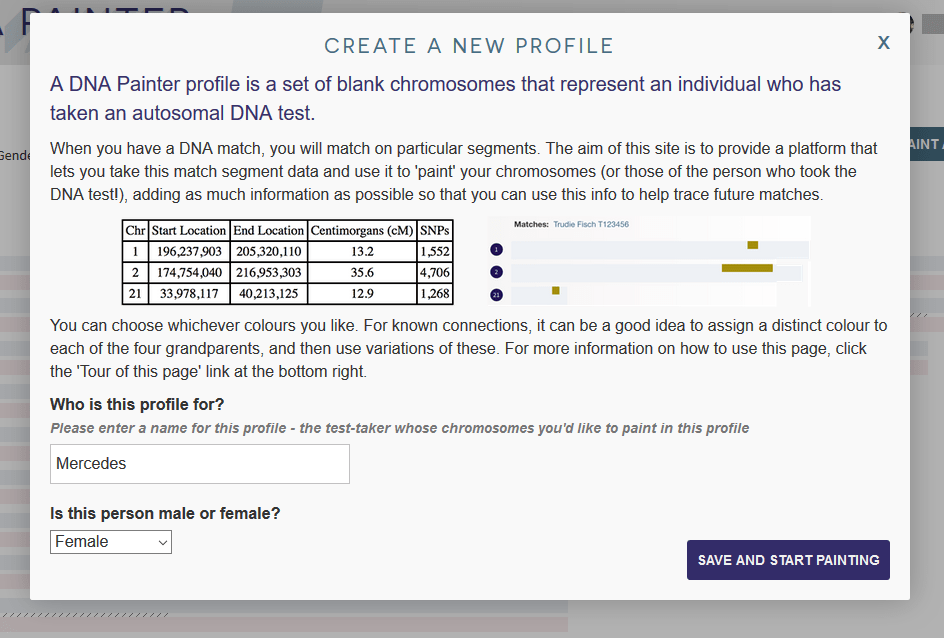This post is a short tutorial that will explain the purpose of profiles on DNA Painter, how to create a new one, and why you should create a new profile for each family member whose DNA you manage.

Painting chromosomes, or chromosome mapping is fun and easy, once you get the hang of it, but the first step is creating a profile for your DNA results.
What is DNA Painter?
DNA Painter is a free website that has a collection of simple tools to help you analyze and understand your unique DNA. My favorite tool on the site is the chromosome painting tool, which helps you easily keep track of DNA matches and determine which of your DNA segments were inherited from a particular ancestor.
Once you have a good portion of your chromosomes "painted", you'll be able to quickly figure out how a new DNA match is related, which will save tons of time!
What is a profile in DNA Painter?
In DNA Painter, you have the ability to manage and maintain multiple DNA profiles. A DNA Profile is simply the blank canvas, if you will, of our 22 numbered chromosomes, along with our X chromosome, ready to be painted.
The blank chromosomes have two copies each, since we inherited one copy from each of our parents. Females will have a paternal and maternal copy of the X chromosome, and males will only have a maternal copy.
Your profile won't stay blank for long, however, since as you paint in your matches, it will fill up with beautiful colored segments representing the actual location of individual DNA segments inherited from all of your ancestors.
It's amazing!
How to create a profile in DNA Painter:
Assuming you already have a DNA Painter account (you can create one here), the first step you should take to create your profile is to log in to your DNA Painter account.
From the main dashboard, you will see a dialogue that says "Welcome, ________. View your DNA Profiles or create a new one. Choose the option to create a new profile (in the image below, I added a big red arrow so you'll know where to click!):

Alternatively, if from the View Your DNA Profiles page, you can click on the option to create a new profile, as shown below:

The final step to creating your profile is to fill in the necessary information in the dialogue box that appeared once you clicked to create a new profile. You'll need to enter a name for the person for whom you are creating the profile (i.e. the person whose DNA results are being used to paint chromosomes).
Even though the information is private and not shared with anyone, you can enter a nickname or even just initials if that makes you more comfortable. Just make sure to give the profile a name that will help you know who the profile belongs to, if you don't want to put the full name (i.e. Uncle Bob, Mom, Grandma Jean).

It is important that you tell the site whether you are creating a profile for the male or a female so that way the software knows how many and which copies of the X chromosome to display.
As I mentioned before, a female will have the opportunity to enter information about each side of her family on the X chromosome, since she inherits X chromosome information from both her mother and father. A male user can only enter information about his maternal lines on the X chromosome, since males don't inherit an X chromosome from their father.
Should you create more than one profile on DNA Painter?
I believe that you should create a profile for every person whose DNA kit that you manage. This way, as you go through your family member's DNA matches, you can paint them into their profiles slowly, learning more and more about your family.
Your family members, even if all of their ancestors are your ancestors, will have different DNA matches than you. They will have inherited different copies of their chromosomes from their parents, and thus, their painted chromosomes will look very different than yours.
If you create a profile for a first cousin (who only shares half of his or her ancestors with you, painting their matches will help save you time in the future since you'll be able to easily spot whether a match is on your side, or their other parent's side of the family. I love saving time!
Should your parents have their own profile on DNA Painter?
Finally, if you manage DNA results for one or both of your parents, you might wonder if it makes sense to create profiles for them, as well. You might have noticed that you match DNA matches that you share in common with them at similar locations on your chromosomes, so does it really matter if you use information from their results or your results?
For chromosome mapping (i.e. DNA painting) to work correctly, it is absolutely crucial for you to create a separate profile for each of your parents - as well as one for yourself.
Your father's Chromosome 18 won't be identical to yours, for example. Your dad has two copies of this chromosome, one from each of his parents. These two copies of Chromosome 18 "recombined" into one paternal copy of Chromosome 18 for you (your other copy is from your mom).
This same process is how DNA segments become smaller, coincidentally.
To summarize this point, just remember that chromosome mapping works best with accurate information, which is why you really want your mom and dad to have their own separate profiles.
Conclusion
I hope that this post helped you get a good idea as to how to create a profile on DNA Painter, and why it is important to each person to have their own unique profile on the site. If you have any questions about something that you read here, I would love to hear from you in the discussion below.
Thanks for stopping by!


Anne DeLong
Friday 24th of April 2020
As a female whose Father is deceased, would mapping my brother’s DNA be helpful to me in tracing my Father’s side of the family?
Mercedes
Sunday 26th of April 2020
Hi Anne, This is a great question. Yes, if your brother is willing to take a DNA test, it would be very helpful in learning about you shared parent or parents. You also inherited DNA from your father, but you and your brother inherited slightly different DNA from him, so it's not all identical. A Y-DNA test for your brother could also shed some light on your father's direct paternal line.